This story is part of a series on the everyday heroes of rural Maharashtra . “No one will perform this art form. People will throw away the threads I made,” says the 80-year-old Dhondiram Khavle laughingly. Khavle tries to pass it as humor, but worries about his traditional skills going extinct. His proficiency with interweaving and tying the knots have not faded with time. Khavle has rare skills of weaving handmade charpoys. This art form saw a downfall and eventually reached the verge of extinction in Maharashtra’s Sangli district a decade ago. However, Khavle knew he had to keep the art form alive, be it for the bygone households or the dhabas [roadside eateries] that still use charpoys. His is the fourth generation in the family to have succeeded in doing just that. For the past seven decades, he has been hand weaving charpoys in Kalambi village of Miraj taluka in Maharashtra’s Sangli district. When I ask him how he learned the art form, he replies, “I kept observing my father and grandfather when they were working. I didn’t even move. How will someone not learn when there’s no other work?” [caption id=“attachment_6044901” align=“alignnone” width=“825”] 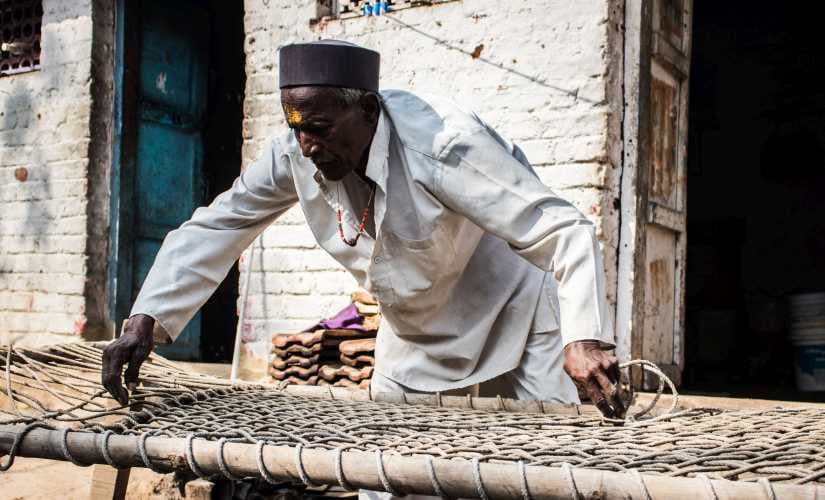 Khavle has been hand weaving the charpoys for the past seven decades. All images courtesy of the author.[/caption] A skilled rope weaver, he now blends his experience to weave a six feet long and 2.5 feet wide charpoy in just an hour. Interweaved in a diagonal pattern, these ropes are then tied to the side rails. His skills don’t earn him enough to survive. “Rarely do I get one or two charpoy weaving orders in a month now,” he says sadly. For weaving one charpoy, he gets Rs 100 and the day’s lunch. “Who uses these charpoys now?” he asks. It’s only restricted to a few old households and dhabas. Metallic cots and mattresses have replaced them. Different types of wood, like Babool, Burmese teak [Sagwan], were used to make these charpoy frames. Earlier, cotton threads used for weaving were made from the Agave fibres. The skilled rope weavers crafted them on their own. Later it was replaced by the discarded cotton threads from power looms. A decade ago, nylon ropes [known as Tangus in Marathi] replaced them. For hand weaving one charpoy, three-kilogram worth of rope is required, estimates Khavle. [caption id=“attachment_6045021” align=“alignnone” width=“825”] 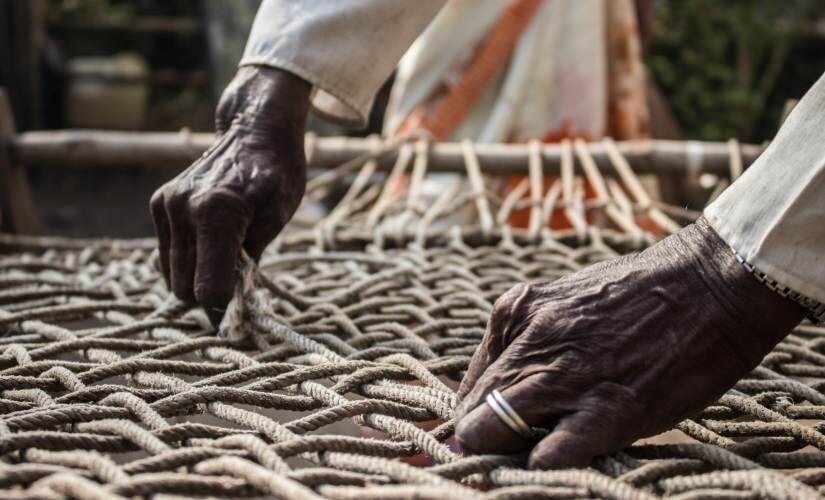 Khavle says, “There’s no respect for this work.” He rarely gets one or two hand weaving orders in a month.[/caption] A master artist Over a period of several decades, Khavle mastered several art forms. This mastery was a response to the rampant casteism which prevails in his village to date. “I only went to school for eight days because the teacher used to hit me a lot,” he remembers. “I managed to educate my children and grandchildren though,” he says proudly. Weaving charpoys never paid enough to make ends meet. Khavle’s parents substantiated it with other art forms like crafting brooms and designing percussion instruments. He later expanded his repertoire and started designing musical instruments himself, like Ektari, Halgi, Chipli, Ghumak, Dimdi, and Kirkit. He has another rare skill of repairing the traditional roof tiles houses which are rare to be found now. Khavle also performs the traditional caste-based occupation of crafting hand-made ropes using firki [a small wooden structure used for making ropes]. He is also a bhajan singer. “How can I not sing if I craft these musical instruments?” he asks laughingly. He sings bhajans of Saint Tukaram, Janabai, to name a few. [caption id=“attachment_6044911” align=“alignnone” width=“825”] 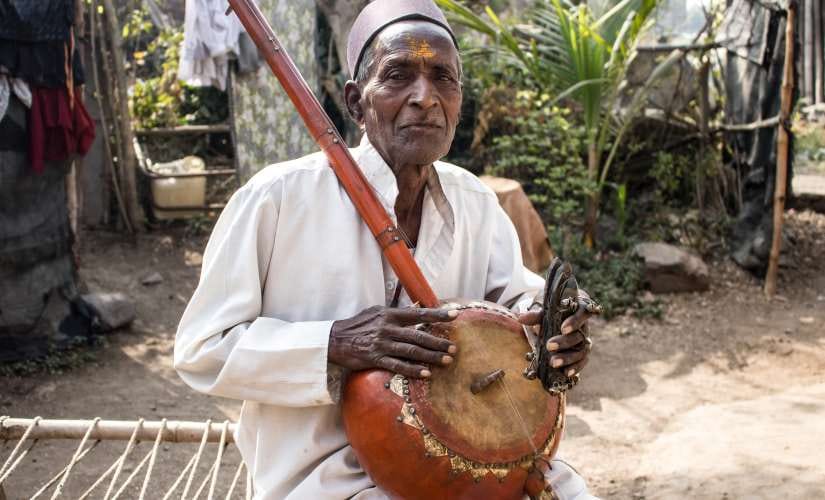 Dhodiram playing the Ektari and Chipli he crafted[/caption] Before picking up several art forms, he worked as a majdoor for six years, specialising in digging wells up to 40 feet without any machines. “Most of the majdoors belonged to the lower castes and we were paid very less for the work,” he recollects. These private wells belonged to the upper caste people in his village. “Using an iron rod [seven kg] we used to drill. There was no drilling machine then,” he smiles. As a reminder of his tough days, he has kept the old iron rod. A labour intensive job, it required at least 40 people working for three months to dig a well. “You can do this kind of work only at a young age and when you belong to a lower caste,” he says laughingly. “We would blast the big rocks at least 15 times to dig one well.” The blasting sound would create havoc in the village. “We always informed the villagers beforehand,” he recollects. Back then [in the late 1960s] a kg of explosive cost Rs 5. Every day they used to get Rs 2.5 [in the early 1970s] for digging the wells for 10 hours. Before that, they would get food grains in return for the labour. His wife, Jayabai [early 70s] is a homemaker. She says, “There is a lot of casteism in our village. To date [Dhondiram] hasn’t received any artist pension because of it.” The family members allege that they visited the upper caste dominated Panchayat office several times to ask about the artist pension, but were forced to return without any answers. [caption id=“attachment_6044971” align=“alignnone” width=“825”] 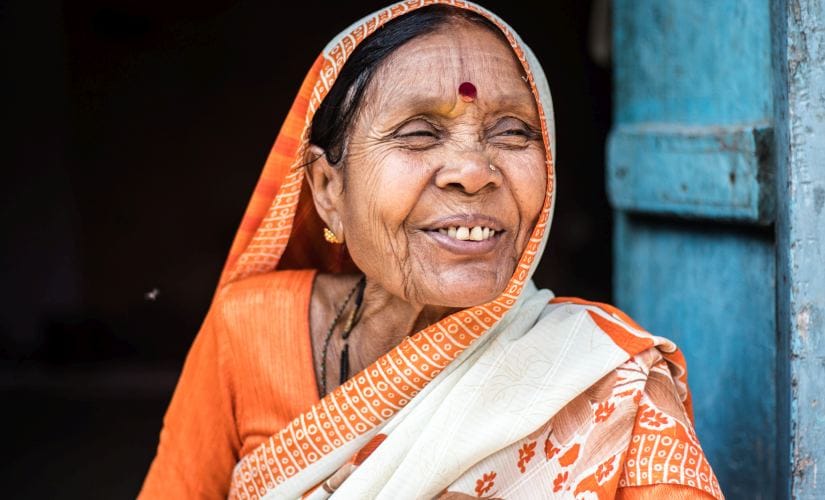 Jayabai Khavle[/caption] Keeping the traditional art forms alive Khavle belongs to the Matang caste which has been listed as a Scheduled Caste. To date, he performs the traditional caste-based occupation of crafting brooms and ropes. One of the issues plaguing a lot of rural artists is the meager pay for their arts and crafts. Khavle is not left untouched by this either. “People ask me to sell a Halgi [a traditional musical instrument] for Rs 300. The leather I use in it costs Rs 200. How can I sell it just for Rs 300?” he asks. Khavle stopped selling his musical instruments long back. Now, he crafts them for pursuing his passion for music. He handcrafts four small brooms in four hours every day. “People don’t even want to pay Rs 35 for a broom. How can someone afford to keep this art form alive?” he asks. He goes to the nearby areas of the village to find the branches of Phoenix sylvestris commonly termed as wild date palm [known as Sindi in Marathi] to craft these brooms. The thorns hurt the artisans. “First we hit it several times with a stick to remove these thorns,” he says. Every day he leaves at 8 in the morning and spends four hours looking for the branches of wild date palm. “For centuries, we have been following the same techniques. Nothing has changed in this,” he says. [caption id=“attachment_6044951” align=“alignnone” width=“825”] 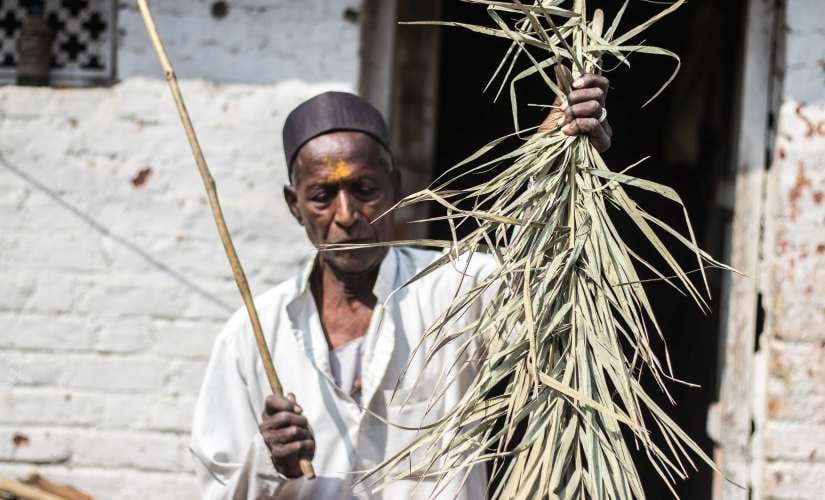 To remove the thorns from the branches of wild date palm it is first smashed using a stick[/caption] Talking about the changes which took place in crafting ropes, he says, “Earlier the fibres of Agave plant were used to make these ropes.” In the early 1990s, cotton threads started replaced them owing to the lesser manual labour required. “We had to soak the [Agave] fibres for a week. Only after that, it could be used to make ropes,” he recollects. Over a period of years, the occupation started declining because of the entry of Nylon ropes. “Nylon is stronger than cotton ropes and hence people don’t use these old ropes now,” he elaborates. [caption id=“attachment_6045061” align=“alignnone” width=“825”]  Khavle has continued the traditional caste based occupation of crafting handmade ropes[/caption] Rarely does he gets a rope crafting order once a month anymore. “People now give me the cotton thread. I just twist them, make braids and then the rope [20 metre long],” he says. Using the cotton thread, he also makes gofan [slingshot] which is used to shoo away birds in the agricultural fields. It takes at least 30 minutes to make one gofan for which he gets Rs 20. None of his sons picked up the traditional art forms. His elder son, Mohan, 48 is a tenant farmer and the younger son, Ratan, 46 is a house painter. “Only he can weave charpoys. We don’t know and it’s too difficult for us,” says Ratan. [caption id=“attachment_6044981” align=“alignnone” width=“825”] 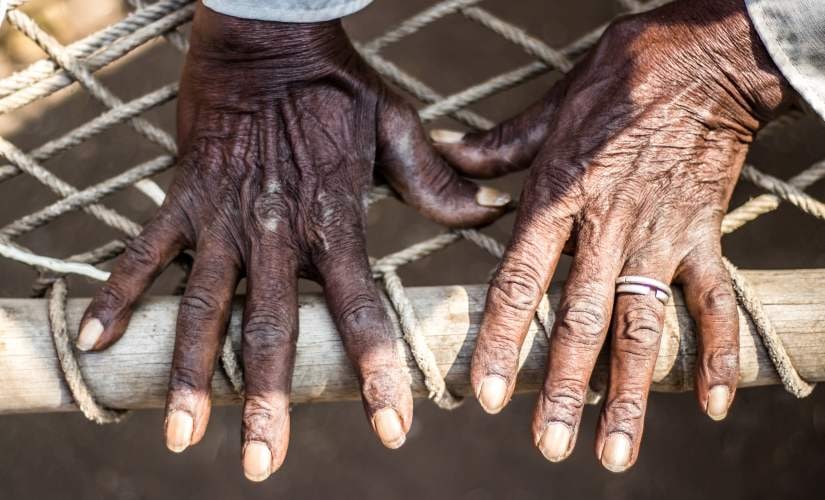 The wrinkled hands of Dhondiram which do near fear the changing times[/caption] When I ask Khavle for how many years he will continue the art form, he smiles, shows me his wrinkled hands and says, “There’s no respect for this work, but I won’t stop practising this occupation till the day I die.”
Khavle has rare skills of weaving handmade charpoys. This art form saw a downfall and eventually reached the verge of extinction in Maharashtra’s Sangli district a decade ago.
Advertisement
End of Article


)

)
)
)
)
)
)
)
)



